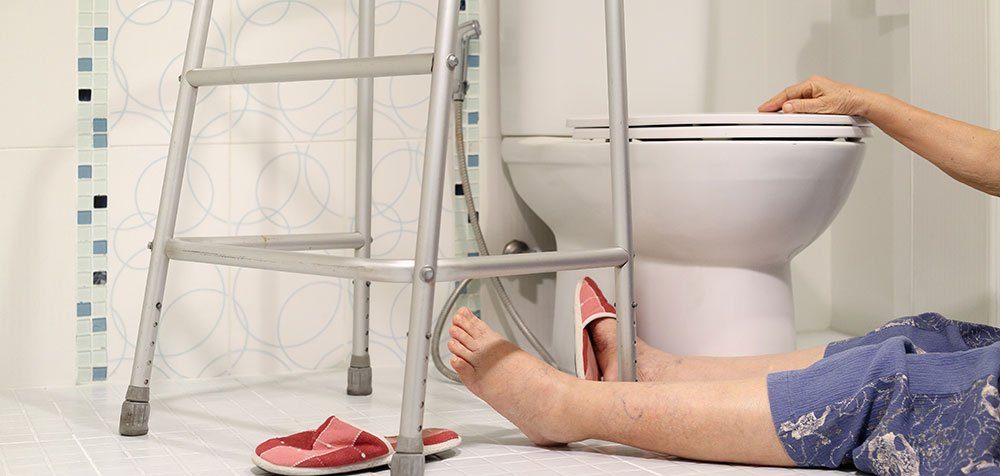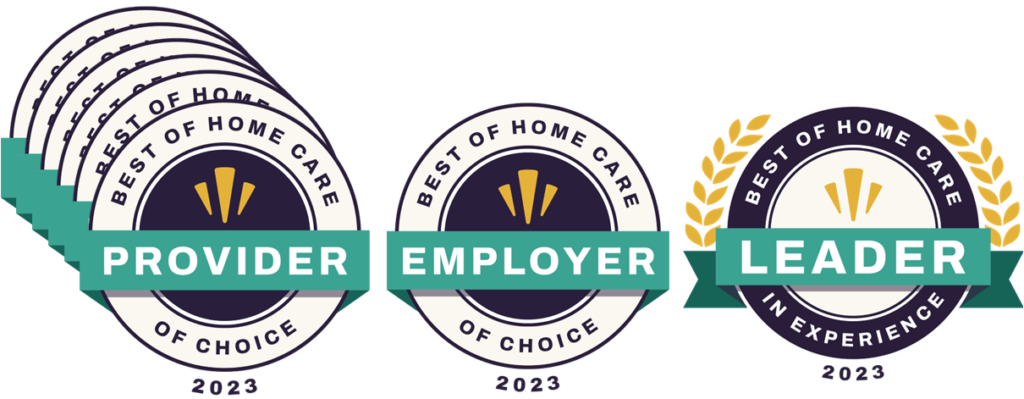The bathroom is routinely cited as the most dangerous room in the house for seniors. Countless slips and falls occur in the bathroom, causing a difficult (and sometimes embarrassing) situation for families. Because so many falls occur in the bathroom, we highly encourage our clients and their caregivers to take a close look at the bathroom for safety issues.
A fresh set of eyes, and a few simple changes, can make the bathroom a safe and comfortable place for everyone.
THE SHOWER:
Equip showers and surrounding walls with sturdy grab bars anchored to wall studs so they can support the full weight of an adult. Some portable safety handles use super strong suction cups and are easy to apply and remove.
A shower chair is also a safe solution that can be easily placed where balance is a challenge.
Flexible handheld shower wands with an on/off button might be easier to use than a traditional shower head. These are especially useful in combination with shower chairs.
Most medical alert buttons are sufficiently waterproof to wear in the shower. Make sure you always have yours with you as the shower is the number one source of falls in the bathroom.
THE BATHTUB:
Replace an unused bathtub with a walk-in shower. The standard tub/shower unit in so many homes may be uncomfortably high for the elderly and disabled to step over, and too low to sit down into for bathing.
Check temperature settings on water heaters, as water hotter than 120 F can scald skin. Special no-scald faucets or a no-scald regulator can be installed as a secondary layer of protection.
Alternatively, provide a spa-like walk-in tub. Installing a walk-in bathtub or shower system with a built-in seat brings back a measure of independence in self-care. Many walk-in tubs are designed to fit perfectly in the space of a conventional tub for easy installation and are now available with luxurious special features.
THE FLOOR:
Consider installing nonskid tape or mats on the floor of a shower or bathtub.
Make sure bath mats are slip proof and don’t create a tripping hazard.
THE TOILET:
Toilets can be replaced with a taller ADA-approved raised-height models to lessen the chance of a harsh fall. Alternatively, raised-height seats can be installed on existing toilets.
Standard toilets have a bowl height of about 15 inches, but many manufacturers have recently introduced models that are an inch and a half higher. These taller commodes make sitting down and getting back up less stressful on the body.
Keeping an extra medical alert button near the toilet is a smart idea so they can summon help right away.
THE SINK:
Some faucet handles are difficult for arthritic hands to grip and turn. These should be replaced with an ADA-compliant faucet that is easier for seniors to use.
This faucet style also has an adjustable hot limit safety stop to help reduce scalding.
This simple and inexpensive alteration will make washing up more comfortable for elderly parents and grandparents, and is also a great excuse to perk up the look of your bathroom.
THE STUFF:
Think about accessible storage. Keep bathing and grooming accessories neatly stowed out of the way to reduce trips and falls, and to keep them clear of wheelchairs. Accessibility and functionality are essential when planning for convenient storage options in the bathroom.
Vanities that offer ample storage space within a smaller footprint can hide hair dryers, towels, bath products and cleaning supplies, creating an uncluttered look to make a space seem larger.
The top of the toilet tank is valuable bathroom real estate, either on top of the tank or with a small cabinet attached to the wall.
Make it easy on the eyes. High-gloss paints and tiles can produce an uncomfortable glare, so introduce matte finishes for better visibility. Choosing wall and floor colors or patterns that contrast is another great way to increase visual perception of space and help older adults feel more confident as they move about the room.
Source: Bryan Stapp, Today’s Caregiver.


